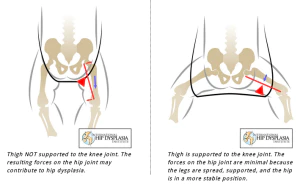Paediatric Flat Foot

Lower limb injuries are the most common area of pain in children and 90% of these cases are associated with the foot. Flat feet (also called Pes Planus) have a bad reputation nowadays and we are often presented with children and their concerned parents seeking advice regarding their children’s feet and any implications this may have for future issues. This stigma largely came about from a study done on military personnel where a large number of soldiers were medically discharged due to foot pain (associated with their flat feet), which was then found to be resolved by the use of arch support orthotics. However, what this study did not consider was all the soldiers who had flat feet but did not have any pain.
Over the years as orthotics became more readily available and through advertising, people are becoming more concerned for their children who appear to have flatter feet than normal and are wondering what is the best management strategy for them. Should they have orthotics to correct the arch? Do they have an abnormality? Should they just wait and see or is interfering doing more harm than good?

A flat foot can be classified as a reduced medial longitudinal arch (the main arch of the foot) coupled with an altered heel position. All children are born with a flattened arch which can often look worse when the child starts to stand or walk due to the increased load coupled with the inherent flexibility of the child’s joints. In a study of 835 children (aged between 3 and 6) 44% were found to have a “flat foot”, which is because normal arch development usually occurs between the ages of 4 and 7 years old, but it can take as long as 10 years.
There are a number of contributing factors that can increase the chance of a flat foot such as body composition, ligament laxity, structural abnormalities and footwear choice. A Physiotherapist will consider all these factors and combined with a physical assessment can determine the severity of the flat foot. They can then provide you with suitable advice and treatment options (often avoiding expensive insoles), such as footwear selection and suitable strengthening exercises.
Learn more about Primrose here.
References: Halabchi, F., Mazaheri, R and Abbasian, L. (2013) Paediatric Flexible Flatfoot; Clinical Aspects and Algorithmic Approach. Iran J. Pediatr. 23 (3);247-260





